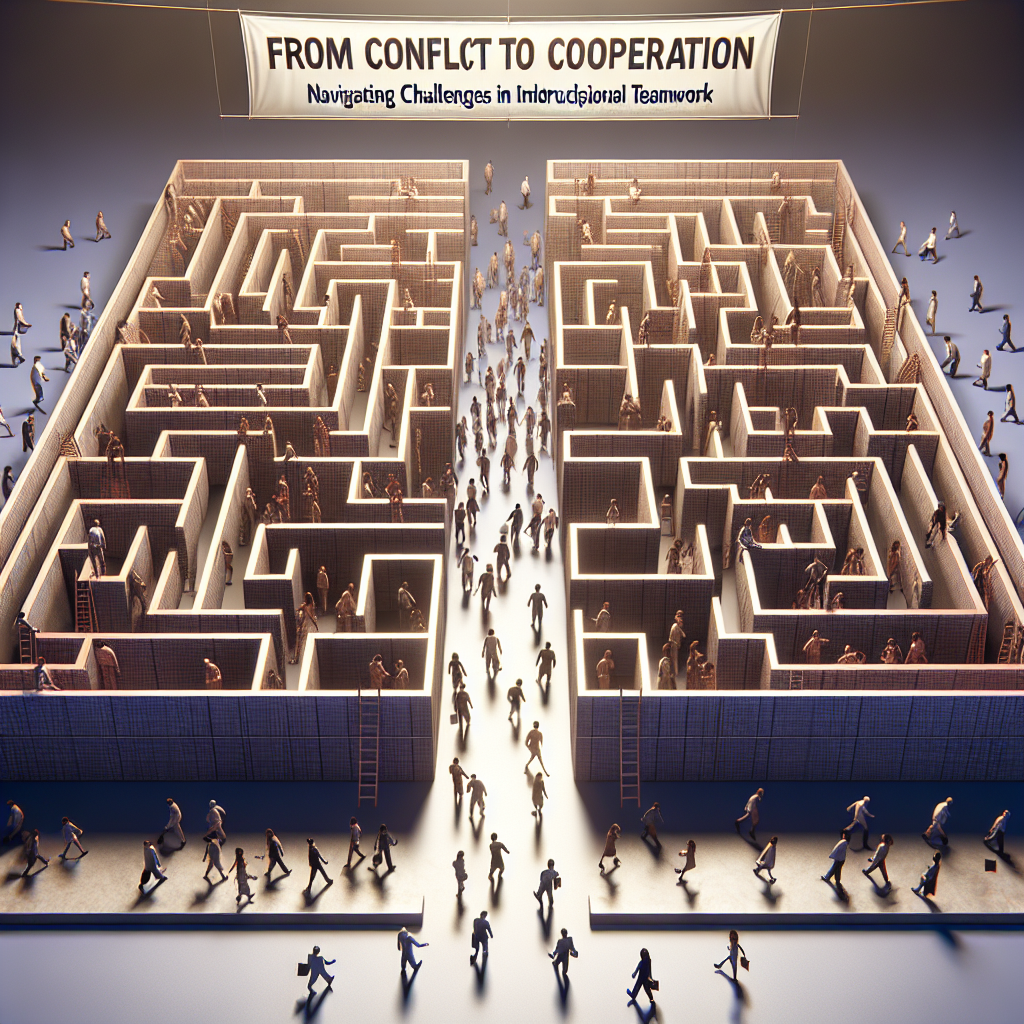Introduction
In today’s complex and fast-paced world, the ability to work effectively across diverse disciplines is no longer a luxury; it’s a necessity. Interdisciplinary teamwork combines unique strengths and perspectives, but it often stumbles upon a common hurdle: conflict. This article delves into the journey From Conflict to Cooperation: Navigating Challenges in Interdisciplinary Teamwork, offering insights, strategies, and real-world examples to help you transform challenges into productive collaborations. By exploring this vital topic, you can learn how to elevate teamwork beyond simple collaboration, engaging every member’s expertise to foster creativity and innovation.
Understanding the Landscape of Interdisciplinary Teamwork
Interdisciplinary teams consist of members from various fields, each contributing specialized knowledge and skills. However, this diversity can lead to misunderstandings, divergent goals, and conflicts. To effectively navigate these challenges, it’s essential to recognize the nature of interdisciplinary teamwork.
The Benefits and Challenges of Interdisciplinary Teams
Benefits:
- Innovation: Different perspectives often lead to creative solutions that a single discipline may overlook.
- Holistic Approaches: Combined expertise allows for more comprehensive problem-solving.
Challenges:
- Communication Gaps: Different terminologies and methodologies can lead to confusion.
- Conflict of Priorities: Individuals may prioritize their discipline’s objectives over team goals.
Case Study: The Medical Team in Crisis Management
In a hospital setting, an interdisciplinary team comprised of doctors, nurses, and administrators is formed to handle a health crisis. Initially, tensions arise due to a clash in priorities—doctors focus on patient care while administrators emphasize efficiency.
Analysis
The situation escalates until the team leader facilitates a team-building workshop, fostering open dialogue about each member’s goals and responsibilities. This investment in communication helps pivot the team From Conflict to Cooperation, ultimately enhancing patient care and operational efficiency.
Strategies for Moving from Conflict to Cooperation
To promote cooperation within interdisciplinary teams, consider the following strategies:
1. Foster Open Communication
Encouraging team members to express their views openly creates an environment of trust. Utilize tools like regular check-ins and feedback sessions to facilitate this.
2. Define Clear Objectives
Establishing shared goals will help align team members’ priorities. Clear objectives serve as a common ground, reducing friction and misunderstandings.
3. Embrace Diversity
Understanding and valuing individual contributions can transform a conflictual atmosphere into one of collaboration. Recognize and celebrate the unique skills each member brings to the table.
Case Study: An Educational Reform Initiative
In an educational reform initiative, a team of educators, policymakers, and technologists faced an impasse over curriculum changes. Educators prioritized student engagement, while technologists were focused on scalability.
Analysis
The project was stalled until the team organized a workshop where everyone’s perspectives were presented and discussed. This initiative shifted the team From Conflict to Cooperation, leading to an innovative, student-centered curriculum that integrated technology effectively.
Creating a Collaborative Team Culture
Leadership Matters
Effective leadership is vital in nurturing a culture of cooperation. Leaders should model collaborative behaviors, promote equality, and actively resolve conflicts.
Building Trust
Team-building activities, both formal and informal, nurture trust among members. Trust is the cornerstone of effective teamwork, enabling members to feel safe enough to share ideas and challenge each other constructively.
Tools and Techniques to Enhance Collaboration
Collaborative Tools
Today’s technology offers myriad tools like Asana, Trello, and Slack that can support project management and communication, making it easier to collaborate across disciplines.
Regular Feedback Loops
Establishing mechanisms for continuous feedback is essential. Regularly gauge team sentiment and progress, allowing for adjustments based on input from all team members.
Case Study: The Cross-Functional Marketing Team
A cross-functional marketing team comprising graphic designers, copywriters, and strategists struggled with overlapping responsibilities, leading to confusion and conflict.
Analysis
After a series of collaborative workshops, where team members outlined their roles and responsibilities, team dynamics improved significantly, transforming their collaboration From Conflict to Cooperation. Clear delineation of roles reduced friction, enabling them to produce cohesive campaigns effectively.
Best Practices for Sustaining Interdisciplinary Cooperation
Continuous Learning
Always encourage team members to engage in professional development in their fields and in conflict resolution strategies. Learning together fosters stronger bonds.
Celebrate Successes
Acknowledging and celebrating both small victories and major achievements reinforces teamwork and encourages continued collaboration.
Conclusion
Navigating the landscape of interdisciplinary teamwork is a challenge that, when approached mindfully, can lead to profound benefits—not just for team members but for the larger objectives they serve. From Conflict to Cooperation: Navigating Challenges in Interdisciplinary Teamwork is about embracing diversity, cultivating communication, and creating a shared vision. With the right tools and strategies, you can transform potential conflicts into stepping stones for innovative solutions that benefit everyone involved.
FAQs
-
What are common sources of conflict in interdisciplinary teams?
- Conflicts often arise from miscommunication, differing priorities, and unclear roles. Each discipline’s unique language can also contribute to misunderstandings.
-
How can I encourage open communication in my team?
- Foster an environment where team members feel safe to share their thoughts by implementing regular feedback sessions and promoting a culture of inclusivity.
-
What role does leadership play in teamwork?
- Effective leaders guide teams by modeling collaborative behaviors, resolving conflicts, and ensuring that all members have equal voice in decision-making.
-
Can conflict ever be beneficial in a team setting?
- Yes, conflict can stimulate dialogue and lead to innovative solutions when managed constructively. It encourages team members to think critically and consider alternative perspectives.
- How can we measure the effectiveness of our interdisciplinary teamwork?
- Regularly set objectives and key performance indicators (KPIs) to gauge progress. Also, solicit feedback from team members to assess collaboration and satisfaction levels.
By embracing the potential within conflicts and fostering an environment of cooperation, organizations can unlock the full power of interdisciplinary teams. Continue to explore and implement these strategies, and soon, you’ll witness the transformation that comes From Conflict to Cooperation: Navigating Challenges in Interdisciplinary Teamwork.

